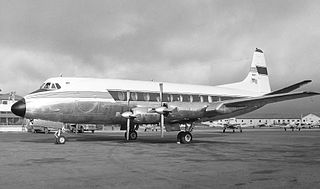
Lloyd Aéreo Boliviano S.A.M., was the flag carrier and principal airline of Bolivia from 1925 until it ceased operations in 2010. Before its demise it was headquartered in Cochabamba and had its main hubs at Jorge Wilstermann International Airport and Viru Viru International Airport. Founded in September 1925, it was the second oldest airline in South America after Avianca and one of the oldest airlines in the world.
Aviateca S.A. branded Avianca Guatemala is a regional airline headquartered in Guatemala City. Aviateca was under government ownership and remained so until 1989 when it joined the Grupo TACA alliance of Central America and was privatized. It was fully integrated into TACA, operating under the TACA Regional banner, which later merged with Avianca.
Spantax S.A. was a former Spanish leisure airline headquartered in Madrid that operated from 6 October 1959 to 29 March 1988. Spantax was one of the first Spanish airlines to operate tourist charter flights between European and North American cities and popular Spanish holiday destinations and was considered a major force in developing 20th-century mass tourism in Spain. Its popularity and image faded from the 1970s onward when a series of crashes and incidents revealed safety deficits, which, combined with rising fuel costs and increasing competition, resulted in the company facing severe financial difficulties that led to its demise in 1988.

Mamburao, officially the Municipality of Mamburao, is a 2nd class municipality and capital of the province of Occidental Mindoro, Philippines. According to the 2020 census, it has a population of 47,705 people.

Aero Flight 217 was a domestic passenger flight from Helsinki, Finland, to Mariehamn in the autonomous territory of Åland, operated by the Finnish flag carrier Aero O/Y. On 8 November 1963, the aircraft serving the flight crashed in poor visibility while attempting to land on a non-precision approach at Mariehamn Airport in the municipality of Jomala, resulting in the deaths of 22 people out of 25 on board. The crash remains the second most deadly aviation accident in Finland, the first being Aero Flight 311 almost two years earlier.

The 1963 Ankara mid-air collision occurred on Friday, 1 February 1963 over Ankara, Turkey when Middle East Airlines Flight 265, a Vickers 754D Viscount completing a flight from Cyprus, came in for landing and collided in the air with a Turkish Air Force Douglas C-47A; after which both planes fell directly onto the city below them. All 17 people on board both aircraft died, along with 87 people on the ground.

Philippine Air Lines Flight S26 was a domestic flight that departed from Mandurriao Airport in Iloilo on 23 November 1960 at 17:33 PHT to Manila International Airport near Manila.

Philippine Air Lines Flight S85 was a domestic flight that crashed shortly after taking off from Cebu-Lahug Airport, Cebu.

Philippine Air Lines Flight F26 was a domestic flight operated by Philippine Air Lines that crashed en route to Zamboanga Airport, Zamboanga on May 20, 1964.

Philippine Air Lines Flight 741 was a domestic flight operated by Philippine Air Lines that crashed shortly after takeoff from Manila International Airport, Manila.

Philippine Air Lines Flight 984 was a scheduled domestic flight operated by Philippine Air Lines that crashed en route to Davao International Airport, Davao City, Philippines.







